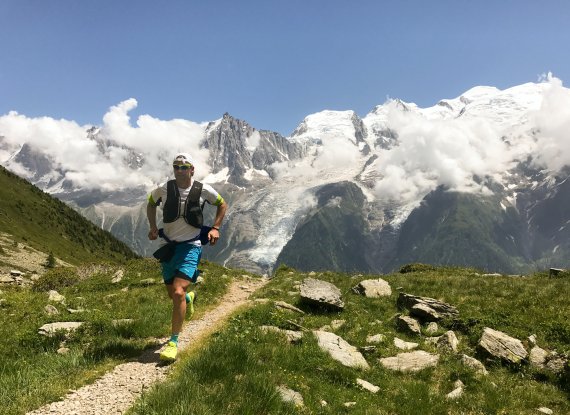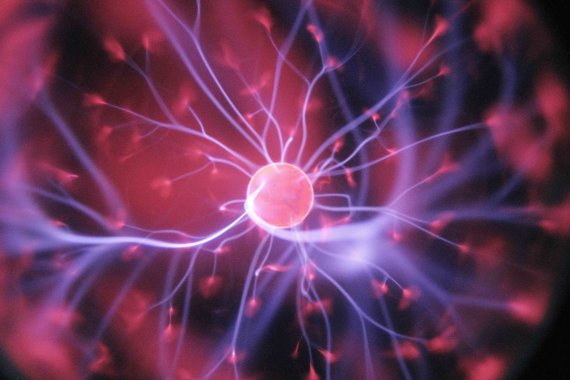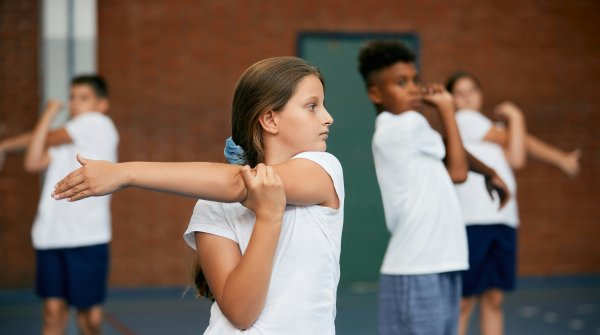
All the information we take in during sport is processed by the brain. All movements, whether they happen unconsciously or consciously, are controlled by the brain. So basically it makes sense to also train the areas of the brain that are responsible for this. Lars Lienhard does exactly that. He is Germany's leading neuroathletics expert. He has published several books on the subject and trained with top athletes such as European sprint champion Gina Lückenkemper, Olympic tennis champion Alexander Zverev, and professional soccer players like Serge Gnabry and Per Mertesacker.
Neuroathletic training, or NAT for short, deals with tasks that the brain performs during sports, i.e. what the brain must be able to do in order to execute movements. The term is composed of "neuronal" and "athletics" and connects the interaction between neural pathways and the body.
Neuroathletics expert and coach Lars Lienhard also speaks of the "software of the body" that must function in order for athletic performance to be achieved: "What are the demands that a sport or a movement places on the athlete's movement-controlling components? Are they physical problems or do we have a software problem, that is, in the brain? I have to figure that out first." Different areas of the brain are responsible for different types of movement, as well as coordination and balance. Physical outputs, in addition to strength and speed, are then such as pain symptoms and injuries when deficits exist.

"The first thing our brain wants is survival. The fundamental problem with endurance exercise is one thing above all: it gets exhausting." Lars Lienhard goes on to explain how this is a problem: "You're only efficient when your brain feels safe. It's constantly trying to assess: How safe is what I'm doing right now? Because if I get so worked up now that I lie down for three days afterwards, I'm fodder. Then I can't run anymore." So the less safe the brain feels about an athletic activity, the more important willpower and strength of character become to keep going. Accordingly, our primal instinct, often called our inner pig dog, helps decide how far we stay below our stress limit when jogging, for example.
In order to assess the situation, information that the brain receives from the body and from outside is constantly evaluated. According to NAT, this is where it is important to start and influence, for example to delay signs of fatigue in endurance sports. Put simply, the input to the brain influences the interpretation and ultimately the output.
The insular cortex in the brain is responsible for enduring physically unpleasant situations. According to Lienhard, the endurance elite and also soldiers* have been shown to achieve excellent values here. "The best endurance runners in the world are those who can say: You're not dying yet!" They have learned to evaluate and assess information differently. In doing so, the athletes* draw on experiences they have made. The insular cortex can also be trained through breathing exercises, such as one-sided inhalation, by differentiating sounds or through balance training and by concentrating on perceptions from within the body, such as feeling one's own heartbeat or pulse.

For the world's best athletes, the last step in running looks like the first. The right running technique is executed even under fatigue and also ensures that it sets in later. The more efficient the technique, the later the onset of fatigue. Lienhard sees this as an important factor in trail running in particular, as different loads act on the body here: a high concentric, positive-dynamic or overcoming load uphill and a high eccentric, i.e. negative-dynamic or balancing load downhill. These different tasks therefore also stress different pathways that transport information toward the brain and can be trained. In the same way, they influence technique training, for example to prevent fatigue.
When running, power transmission to the ground is also important. This is because the foot has to balance there in order to stabilize the leg and the rest of the body. Anything lacking in info for the brain there will lead to fatigue faster. Lienhard therefore describes training the ankle as a good introductory exercise, especially for trail running. Beforehand, he recommends releasing mechanical stress on the sciatic nerve through stretching exercises. In addition, he advises relaxation training as well as pain tolerance training.

NAT thus aims to eliminate insecurities in the brain with exercises and to improve the transmission of information from different regions of the body.
The exercises used often seem a bit strange or crazy. Or as if they had nothing at all to do with sports. During lectures, for example, Lienhard likes to present a slide on which the words red, green, black or blue are colored in a completely different tone. The audience has to read out the written word without being distracted by the color of the writing. Eye rolling, squinting and other visual training are also part of the repertoire. The same applies to sticking out the tongue as far as possible, rolling it or touching certain points on the palate. The reason: both the eyes and the tongue address certain areas that are responsible for movement.
But whether deficits can be minimized by the methods of neuroathletics training is scientifically disputed. Trainer Lienhard admits as much. Nevertheless, his training methods seem to be at least one building block of the success of the athletes he coaches.
 Know-HowThe 11 Best TRX Exercises
Know-HowThe 11 Best TRX Exercises
- ISPO awards
- Mountain sports
- Bike
- Design
- Retail
- Fitness
- Health
- ISPO Job Market
- ISPO Munich
- ISPO Shanghai
- Running
- Brands
- Sustainability
- Olympia
- OutDoor
- Promotion
- Sports Business
- ISPO Textrends
- Triathlon
- Water sports
- Winter sports
- eSports
- SportsTech
- OutDoor by ISPO
- Heroes
- Transformation
- Sport Fashion
- Urban Culture
- Challenges of a CEO
- Trade fairs
- Sports
- Find the Balance
- Product reviews
- Newsletter Exclusive Area
- Magazine




